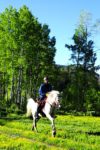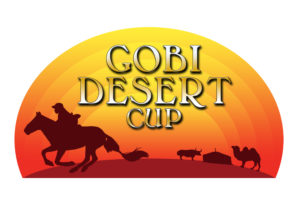Endurance riders know the importance of proper carriage and framing of the horse. Especially during the long endurance rides, horses that travel heavy on their forehand won’t last and sooner or later will be compromised, either with sore and hollow backs and/or forelegs injuries. Horses forehands already take a bigger load just by their design; that’s why it is of utmost importance that the rider trains and helps the horse to shift as much of the work load as possible to the hind quarters. It will help lighten the front end, protect the joints and tendons of the fore legs and reduce stumbling.
Today we want to share with you some basic and simple exercises that you can fit easily into your riding and training schedule. You can do it by yourself, it doesn’t require an instructor to be with you for feedback and you won’t have to spend lengthy periods of time in the arena. Easy to learn and easy to apply, yet the payback will be enormous.
What does “collection” or “bascule” actually mean? Simply explained, it is the result of engagement of the hind quarter, which is flexion of the lumbosacral joint. It starts from there and is completed when the top line of the back of the horse extends upwards. As a final result the observer will notice a neck telescoping gesture, where the top line of the neck is arched upwards while the head is carried somewhat lower and extended.
Horses, just like people and other mammals, have trigger points throughout their body. When these trigger points are stimulated through certain touch, muscles will contract or extend involuntarily, that means without using cognitive involvement. The most known trigger point in humans is the knee reflex trigger. The horse has a couple of trigger points that will make it contract the abdominal muscles and raise the his back and top line.
The following exercises are to be done with the rider on the ground. You can do these before you go riding or after you come back or just about anytime you are spending time with your horse.
Stand at the side of your horse, use the fingernails of both hands and gently press them upwards from the mid line of the underside of the belly.
Hold this up to 30 seconds. You will notice the contraction of the abdominal muscles and clearly see the extension of the back upwards.
Observe the raised top line, it is almost parallel to the concrete below.
After applying the belly lift 3 to 4 times, step behind the horse. After placing the thumbnails of both thumbs over the haunches near the croup, quickly slide them with moderate pressure towards you and finish in line with the dock of the tail.
Clearly visible the upward extension of the back.
This all can get achieved within a few minutes, the payback over a period of time will be tremendous.
After saddling, you can spend a few minutes practicing half halts over cavaletties. This will get the horses mind and body ready for the obstacles on the trail and instill some discipline.
During our clinics at Global Endurance Training Center, we do spend a lot of time teaching proper collection to our attending clients.
This horse is still young and inexperienced. But you can already notice some flexing at the poll and arching of the neck.
This horse demonstrates a better bascule, his right hind leg steps nicely under his body.
Once on the trail, we seek out steep up and down hill slopes. We walk the horse up and downhill, then stop in the middle. The horse will only be able to stop comfortably, if his SL joint is flexing and the hind legs are far enough forward under the body thus supporting his and the riders weight. Examine the following images, and compare.
Can you observe the various degrees of colletion and SL joint flexion? Telescoping necks?
During these Stop and Go exercises, we only walk. Once your horse handles stopping in the middle of the down and uphill and can stand comfortably for several seconds, you can then make your horse step on step back up the hill or down the hill, depending which way you are going. That will make them step under their body even more and flexes the SL joint further.
We never trot up the steep hills. Trotting will have a tendency to stretch your horse out and make them pull themselves up instead of pushing with the hind quarters. Sometimes we canter uphill, but cantering is more a cardiovascular exercise. Horses will have to use their hind quarters, but they also use momentum for uphill propulsion. Only walking uphill will build muscle strength. From a horses point of view, it is not energy efficient, they would rather canter uphill. But for exercise and strength training, the walk up and down steep hills will get you the best results.
For flat terrain, the canter is a better gait to train for collection than the trot.
Both images show the lightness on the front and the strong push off with the hind quarters. We can observe bascule and good SL flexion.
In a canter, a horse is more likely to collect himself compared to the trot, which often encourages the horse to stretch and hollow out But the rider plays a big role in the outcome. Without a proper seat and the proper aid and cues, the results will probably only be mediocre.
At Global Endurance Training Center, we emphasize collection in our clinics. It is so important for the longevity of your horse and for successful outcome of your endurance and trail rides. We teach the cues and aids for collection in a way that is easy to understand and easy to apply. Your horse will thank you for attending one of our clinics.
Christoph Schork, GETC Staff member



Hilary Clayton has produced a great video with supplemental book called “Activate Your Horse’s Core”, with ground exercises much like yours. These help to build the hard to access sublumbar abdominal muscles, strengthening the horse’s core and helped to develop the muscles that are needed for bascule. It’s a great video, and gives riders something they can do when they can’t ride due to weather, etc. Easily done in a stall or shelter…have lots of carrots on hand!
Your technical approach to horse training is truly remarkable!!